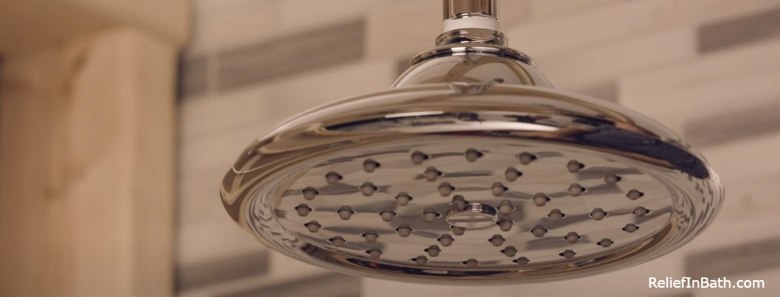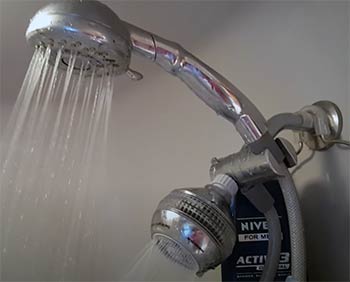Ah, the anticipation of a refreshing, invigorating shower – only to be met with a pitiful trickle that leaves you feeling more frustrated than rejuvenated. Low shower pressure is one of those bathroom woes that can truly dampen your spirits (pun intended). But fear not, dear reader, for we’re about to embark on a journey to unravel the mysteries behind this perplexing plumbing predicament.
In this comprehensive guide, we’ll explore the various culprits that could be responsible for your shower’s lackluster performance, from clogged pipes to outdated fixtures. We’ll also provide practical solutions to help you restore that glorious, high-pressure shower experience you so rightfully deserve.
So, grab a towel (you never know when you might need to mop up some spills), and let’s dive right in!
The Usual Suspects: Common Causes of Low Shower Pressure
Before we get into the nitty-gritty of solving your shower pressure woes, let’s take a moment to understand the potential culprits behind this frustrating phenomenon.
1. Clogged Showerhead

One of the most common reasons for low shower pressure is a clogged showerhead. Over time, mineral deposits, soap scum, and even hard water buildup can accumulate in the tiny holes of your showerhead, restricting the flow of water and leaving you with a mere trickle.
2. Blocked Pipes
Just like arteries, your plumbing pipes can become clogged with debris, hair, and other gunk over time. These blockages can significantly reduce water flow, leading to a disappointing shower experience. Whether it’s a localized clog in your shower pipes or a larger issue in your home’s main water line, blocked pipes can be a real shower pressure buzzkill.
3. Outdated Fixtures
If your home is on the older side, your shower’s low pressure could be due to outdated fixtures that are simply not designed to handle modern water flow demands. Older showerheads, pipes, and valves may not be able to deliver the same water pressure as their more contemporary counterparts, leaving you high and dry (quite literally).
4. Water Supply Issues
In some cases, the cause of your low shower pressure may not be within your home at all. Municipal water supply issues, such as aging infrastructure or high demand during peak hours, can result in reduced water pressure throughout your entire home, including your beloved shower.
5. Faulty Pressure Regulator
If you’ve recently noticed a sudden drop in your shower’s water pressure, it could be due to a faulty pressure regulator. This nifty little device is designed to regulate the water pressure in your home, preventing excessive pressure that could potentially damage your plumbing system. However, if it malfunctions or becomes clogged, it can severely restrict water flow.
Shower Pressure Solutions: Restoring Your Spritz and Spunk
Now that we’ve identified the potential culprits, it’s time to roll up our sleeves and tackle these shower pressure woes head-on. Here are some practical solutions to help you reclaim that invigorating shower experience:
1. Clean or Replace Your Showerhead
If a clogged showerhead is the root cause of your low pressure, the solution can be as simple as giving it a good cleaning or replacing it altogether. For a quick fix, soak your showerhead in a vinegar solution or use a small brush to dislodge any debris clogging the holes. If that doesn’t do the trick, it might be time to invest in a new, high-efficiency showerhead designed to optimize water flow.
2. Unclog Your Pipes
If you suspect a clogged pipe is to blame, it’s time to break out the plunger or invest in a sturdy drain snake. These trusty tools can help dislodge any stubborn blockages, clearing the way for better water flow. If the clog is particularly stubborn or located deeper in your plumbing system, it might be time to call in a professional plumber with the right equipment to tackle the job.
3. Upgrade Your Fixtures

If your low shower pressure is due to outdated fixtures, consider upgrading to more modern, efficient models. This can be a more substantial investment, but it’s one that can pay off in the long run with increased water pressure, lower utility bills, and a more enjoyable showering experience.
4. Investigate Water Supply Issues
If your low shower pressure seems to be a widespread issue throughout your home, it’s worth investigating potential water supply problems. Contact your local water utility provider to inquire about any known issues or planned maintenance that could be affecting water pressure in your area.
5. Replace or Adjust Your Pressure Regulator
If a faulty pressure regulator is the culprit, it’s time to take action. Depending on the situation, you may need to have the regulator replaced or simply adjusted to allow for increased water flow. This is a job best left to a professional plumber, as tampering with your home’s water pressure can have serious consequences if not done properly.
The DIY Dilemma: When to Call in the Pros
While some shower pressure issues can be resolved with a bit of elbow grease and a DIY spirit, there are times when it’s best to call in the professionals. Here are a few scenarios where seeking expert help is highly recommended:
1. Extensive Plumbing Work Required

If your low shower pressure is due to a major blockage or plumbing issue that requires extensive work, such as replacing pipes or rerouting lines, it’s best to leave it to the experts. Attempting complex plumbing tasks without the proper knowledge and tools can lead to costly mistakes and further damage.
2. Safety Concerns
Tinkering with your home’s water pressure or plumbing system can be risky if not done correctly. If you’re unsure about the safety aspects of your DIY efforts, it’s always better to err on the side of caution and hire a licensed professional.
3. Persistent Problems Despite DIY Efforts
If you’ve tried various DIY solutions but your shower pressure remains stubbornly low, it’s time to call in reinforcements. A professional plumber has the expertise and specialized tools to diagnose and resolve even the most stubborn shower pressure issues.
4. Building Code Compliance
Depending on your local building codes and regulations, certain plumbing work may require professional installation and inspection to ensure compliance. Attempting to bypass these requirements can not only put your safety at risk but also lead to costly fines or legal issues down the line.
FAQ: Answering Your Shower Pressure Queries
To help you navigate the world of shower pressure woes with confidence, we’ve compiled a list of frequently asked questions and their corresponding answers:
There are several potential solutions, including cleaning or replacing the showerhead, unclogging pipes, upgrading fixtures, investigating water supply issues, or replacing/adjusting the pressure regulator. In some cases, professional plumbing assistance may be required.
This could be due to a localized issue, such as a clogged showerhead or a blockage in the shower’s plumbing lines. It’s worth checking for any obstructions specific to your shower before considering broader plumbing issues.
A sudden loss of water pressure in your shower could be caused by a variety of factors, including a faulty pressure regulator, a newly developed blockage in the pipes, or a municipal water supply issue. It’s important to investigate the cause promptly to prevent further issues.
To increase water pressure, you can try cleaning or replacing the showerhead, unclogging pipes, upgrading to higher-efficiency fixtures, adjusting the pressure regulator (if applicable), or addressing any water supply issues. In some cases, a professional plumber may be required to resolve more complex pressure problems.
Also Read: Can You Have A Walk-In Shower Without A Glass Door?
Conclusion
And there you have it, dear readers – a comprehensive guide to tackling the frustrating issue of low shower pressure. Whether you’re dealing with a clogged showerhead, blocked pipes, outdated fixtures, or a faulty pressure regulator, we’ve armed you with the knowledge and practical solutions to reclaim that invigorating shower experience you deserve.
Remember, while some shower pressure issues can be resolved with a bit of DIY ingenuity, it’s always better to prioritize safety and call in the professionals when necessary. A licensed plumber has the expertise and tools to diagnose and resolve even the most stubborn shower pressure problems, ensuring a long-lasting solution that meets all building codes and regulations.
So, the next time you find yourself facing a mere trickle instead of a refreshing shower, take a deep breath, channel your inner plumbing warrior, and tackle the issue head-on.
